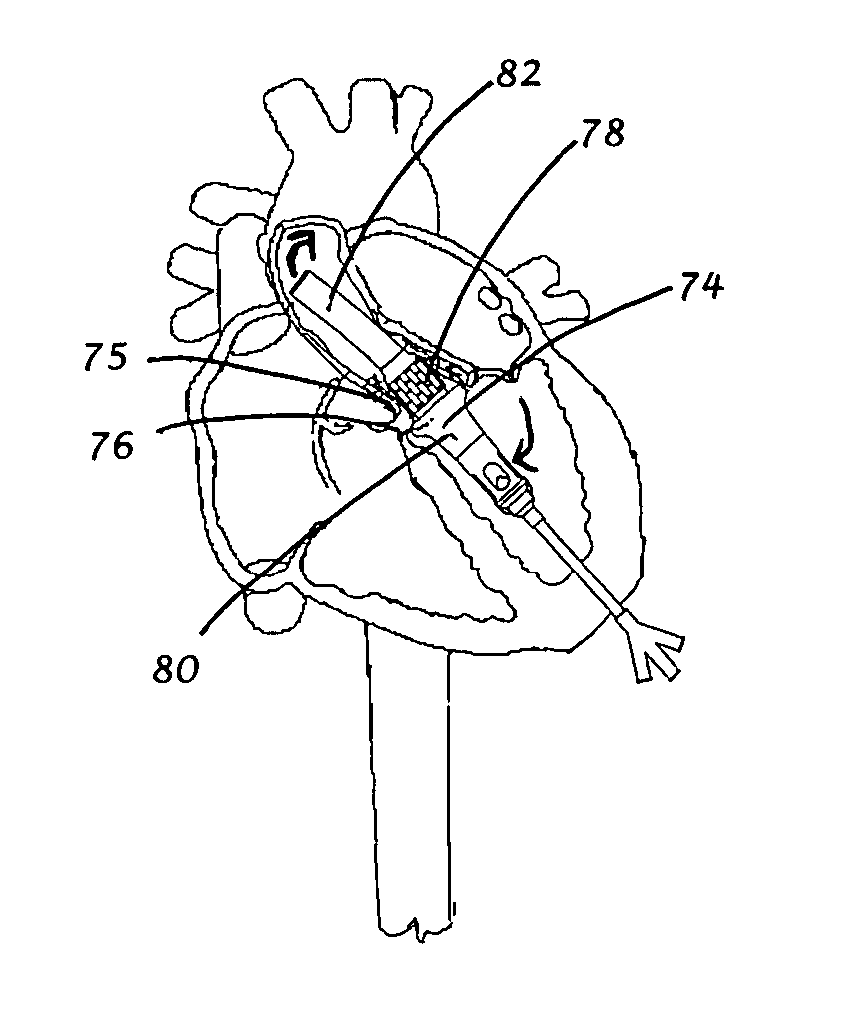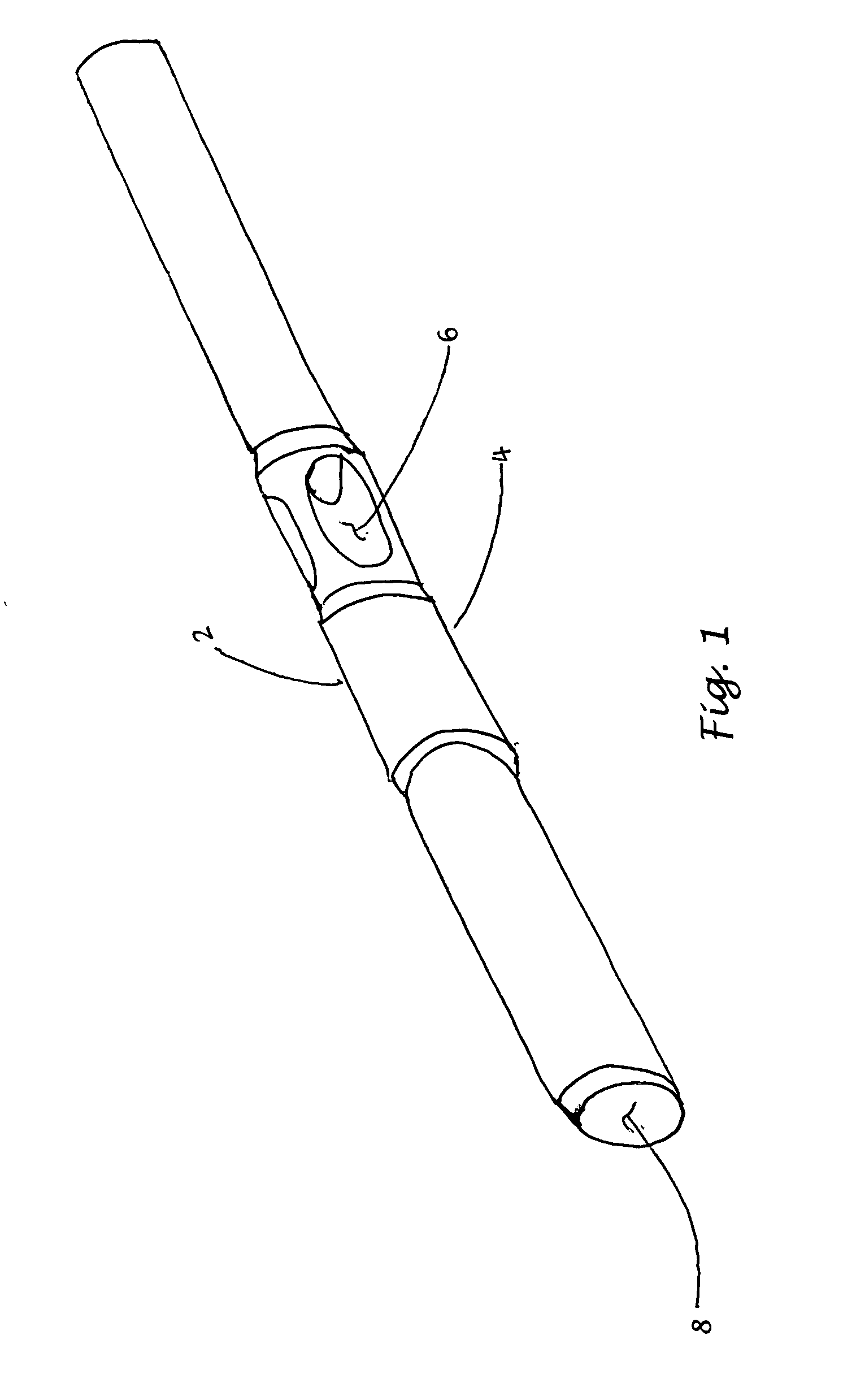Cardiac support cannula device and method
a cannula and support technology, applied in the field of cardiovascular surgery, can solve the problems of long and tedious open-heart valve repair or replacement surgery, high risk of complications, and surgeons' time-consuming, and achieve the effect of prolonging the tim
- Summary
- Abstract
- Description
- Claims
- Application Information
AI Technical Summary
Benefits of technology
Problems solved by technology
Method used
Image
Examples
Embodiment Construction
Structure
[0039] In a preferred embodiment as shown in FIGS. 3A-3C, the Cardiac Support Cannula 10 comprises three main elements: a Transfer Shaft 12, a Flow Housing 14, and an Outflow Cannula 16.
Transfer Shaft
[0040] The Transfer Shaft 12 is the most proximal element of the device. The purpose of the Transfer Shaft is to provide user control and orientation of the other, more distal elements of the device and to allow fluid communication with the more distal elements of the device or the heart itself.
[0041] The Transfer Shaft 12 comprises a Tubular Member 14 with a Port Connector 16 attached to the proximal end and a Flow Diverter 18 attached to the distal end.
[0042] The Port Connector 16 is composed of polycarbonate plastic or some other suitable biocompatible material. The Port Connector 16 has three proximal ports identified as the Annulus Balloon Port 18, the Infusion Port 20, and the Stent Balloon Port 21. These ports are in common communication with one Distal Port 24. The...
PUM
 Login to View More
Login to View More Abstract
Description
Claims
Application Information
 Login to View More
Login to View More - R&D
- Intellectual Property
- Life Sciences
- Materials
- Tech Scout
- Unparalleled Data Quality
- Higher Quality Content
- 60% Fewer Hallucinations
Browse by: Latest US Patents, China's latest patents, Technical Efficacy Thesaurus, Application Domain, Technology Topic, Popular Technical Reports.
© 2025 PatSnap. All rights reserved.Legal|Privacy policy|Modern Slavery Act Transparency Statement|Sitemap|About US| Contact US: help@patsnap.com



